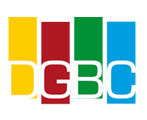Marketing technologies in educational management: current problems
DOI:
https://doi.org/10.46502/issn.1856-7576/2022.16.04.12Keywords:
higher education, education system, marketing technologies, computer technology.Abstract
The article considers in detail the possibilities and significance of marketing technologies for additional education programs as the most flexible and adaptive component of the educational process. Moreover, additional education programs are the most market-defined.
Also at this stage, we have developed the structure of the e-mail message about ongoing additional educational programs in order to promote them, and on its basis, we have prepared an example of a letter for e-mail informational and educational mailing using techniques to attract the attention of the addressee in order to promote additional educational programs.
The content of the letter was also formed for students of the electronic course "Education Marketing", sent out in order to monitor the educational process.
References
Asarta, C.J., & Schmidt, J.R. (2020). The effects of online and blended experience on outcomes in a blended learning environment. The Internet and Higher Education, 44, 100708.
Bao, W. (2020). COVID‐19 and online teaching in higher education: A case study of Peking Higher education institution. Human Behavior and Emerging Technologies, 2(2), 113‒115.
Dang, Y. M., Zhang, Y. G., Ravindran, S., & Osmonbekov, T. (2016). Examining student satisfaction and gender differences in technology-supported, blended learning. Journal of Information Systems Education, 27(2), 119.
De Guzman, M.J.J. (2020). Business administration students’ skills and capability on synchronous and asynchronous alternative delivery of learning. Asian Journal of Multidisciplinary Studies, 3(1), 28‒34.
Goudeau, S., Sanrey, C., Stanczak, A., Manstead, A., & Darnon, C. (2021). Why lockdown and distance learning during the COVID-19 pandemic are likely to increase the social class achievement gap. Nature Human Behaviour, 5(10), 1273-1281.
Graham, C.R. (2009). Blended learning models. In Encyclopedia of Information Science and Technology. Second Edition (pp.375‒382). IGI Global.
Graham, C.R. (2013). Emerging practice and research in blended learning. In Handbook of distance education (pp.351‒368). Routledge.
Graham, C.R. (2018). Current research in blended learning. Handbook of distance education, 173‒188. https://www.taylorfrancis.com/chapters/edit/10.4324/9781315296135-15/current-research-blended-learning-charles-graham
Harris, R.A., & Nikitenko, G.O. (2014). Comparing online with brick-and-mortar course learning outcomes: An analysis of quantitative methods curriculum in public administration. Teaching Public Administration, 32(1), 95‒107.
Kirkwood, A., & Price, L. (2013). Examining some assumptions and limitations of research on the effects of emerging technologies for teaching and learning in higher education. British Journal of Educational Technology, 44(4), 536‒543.
Kopcha, T.J., Ding, L., Neumann, K.L., & Choi, I. (2016). Teaching technology integration to k-12 educators: A ‘Gamified’approach. TechTrends, 60(1), 62‒69.
Raven, A., & Park, C. W. (2015). Information quality as a determinant of task-technology fit in using communication technology for simple task. Issues in Information Systems, 16(1).
Subhash, S., & Cudney, E.A. (2018). Gamified learning in higher education: A systematic review of the literature. Computers in human behavior, 87, 192‒206.
Thai, N.T.T., De Wever, B., & Valcke, M. (2017). The impact of a flipped classroom design on learning performance in higher education: Looking for the best “blend” of lectures and guiding questions with feedback. Computers & Education, 107, 113‒126.
Tirziu, A.M., & Vrabie, C. (2015). Education 2.0: E-learning methods. Procedia-Social and Behavioral Sciences, 186, 376‒380.
Umek, L., Keržic, D., Tomaževic, N., & Aristovnik, A. (2015). Moodle E-Learning System and Students’ Performance in Higher Education: The Case of Public Administration Programmes. International Association for Development of the Information Society.
Zhang, Z., Li, Z., Han, M., Su, Z., Li, W., & Pan, Z. (2021). An augmented reality-based multimedia environment for experimental education. Multimedia Tools and Applications, 80(1), 575‒590
Published
How to Cite
Issue
Section
License
Copyright (c) 2022 Tetiana Zhytomyrska, Iryna Zrybnieva, Nadiia Romaniuk, Iryna Havrysh, Tetyana Gorditsa

This work is licensed under a Creative Commons Attribution 4.0 International License.














